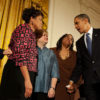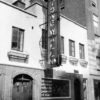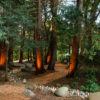Matthew Shepard and James Byrd, Jr.: Hate Crimes Prevention Act

This lesson provides an opportunity for middle and high school students to understand the Matthew Shepard and James Byrd, Jr. Hate Crimes Prevention Act, learn about how hate escalates, connect the understanding of the escalation of hate with Matthew Shepard and James Byrd Jr.’s murders and consider what young people can do in their schools and communities to prevent hate crimes.








